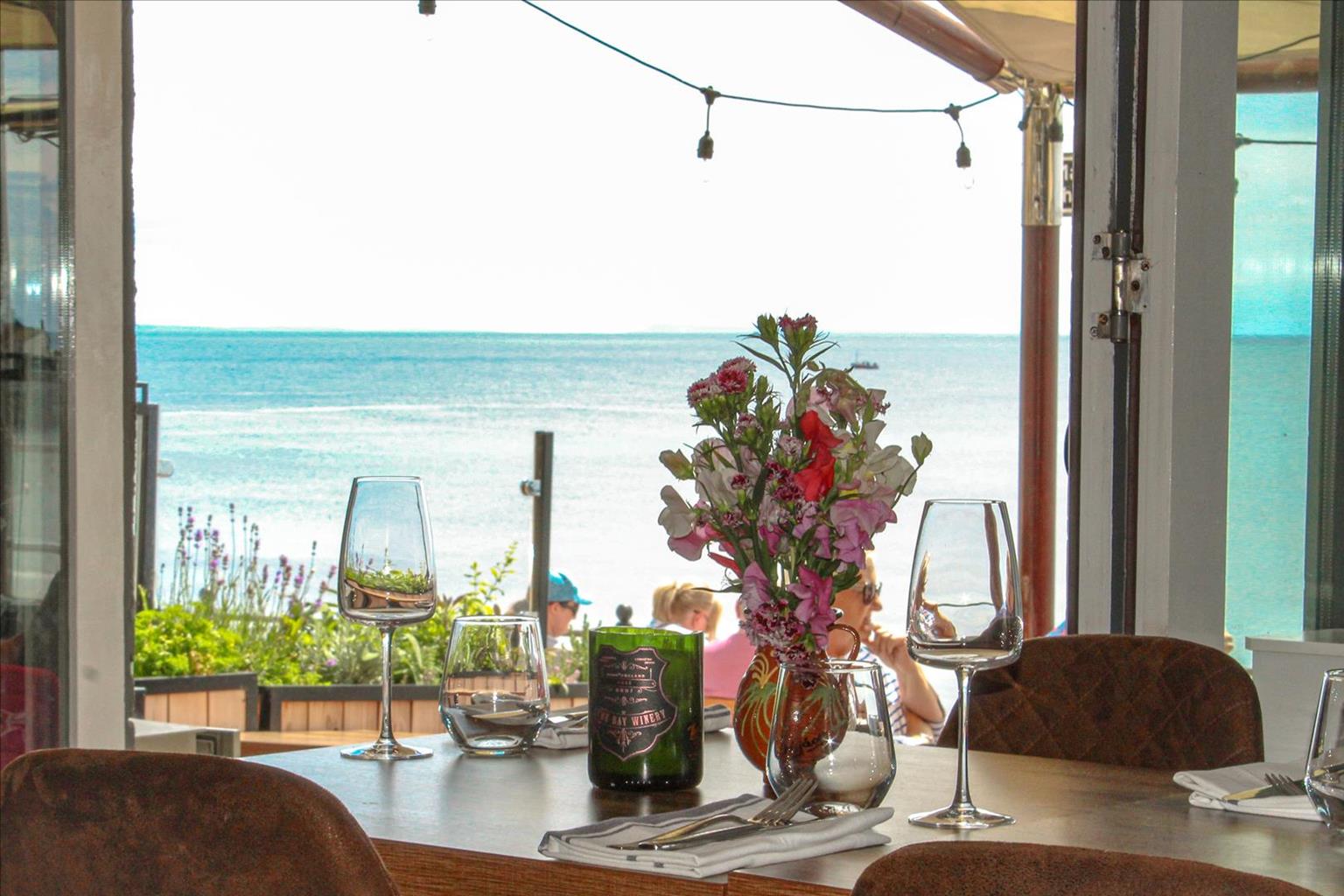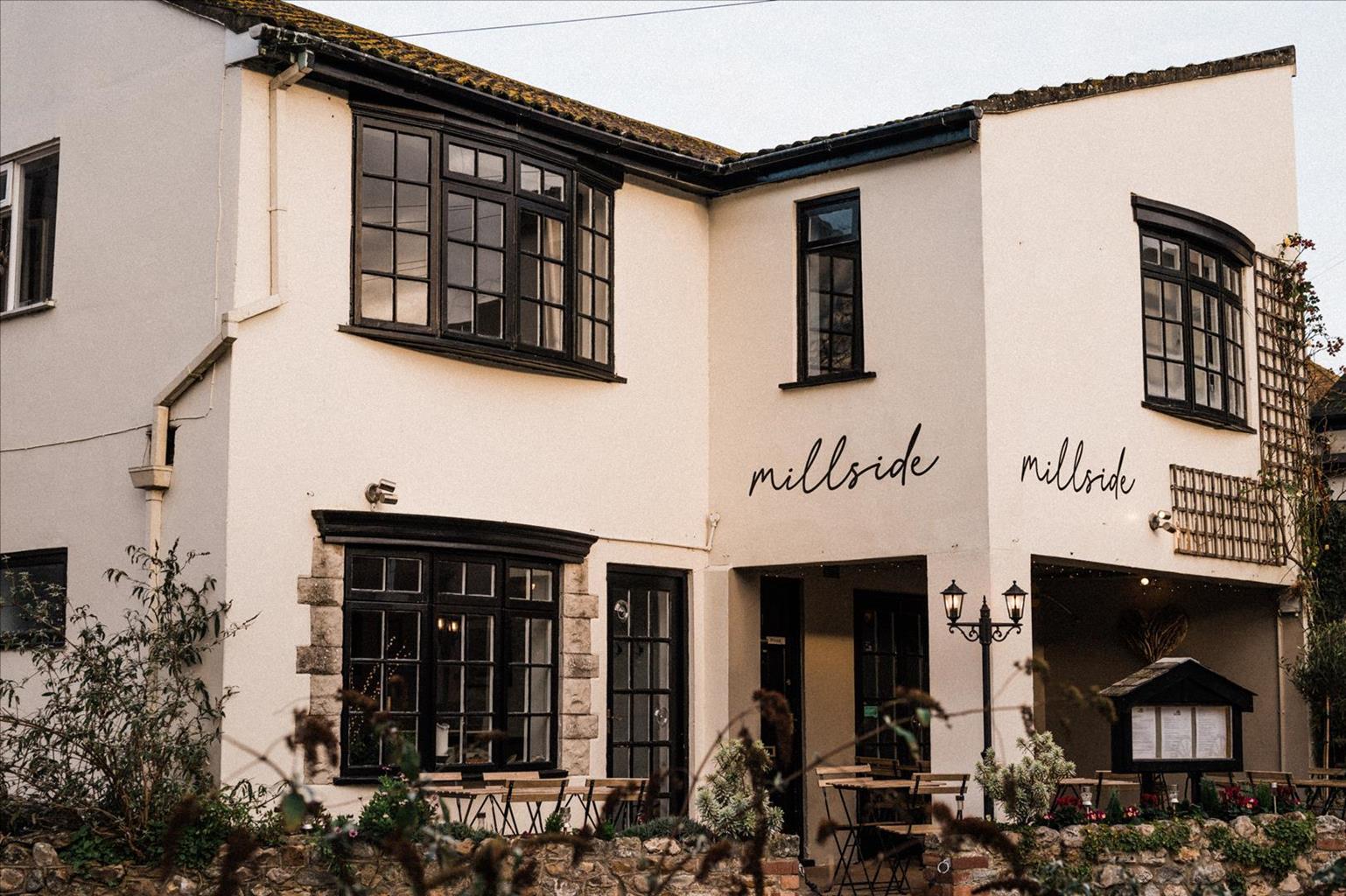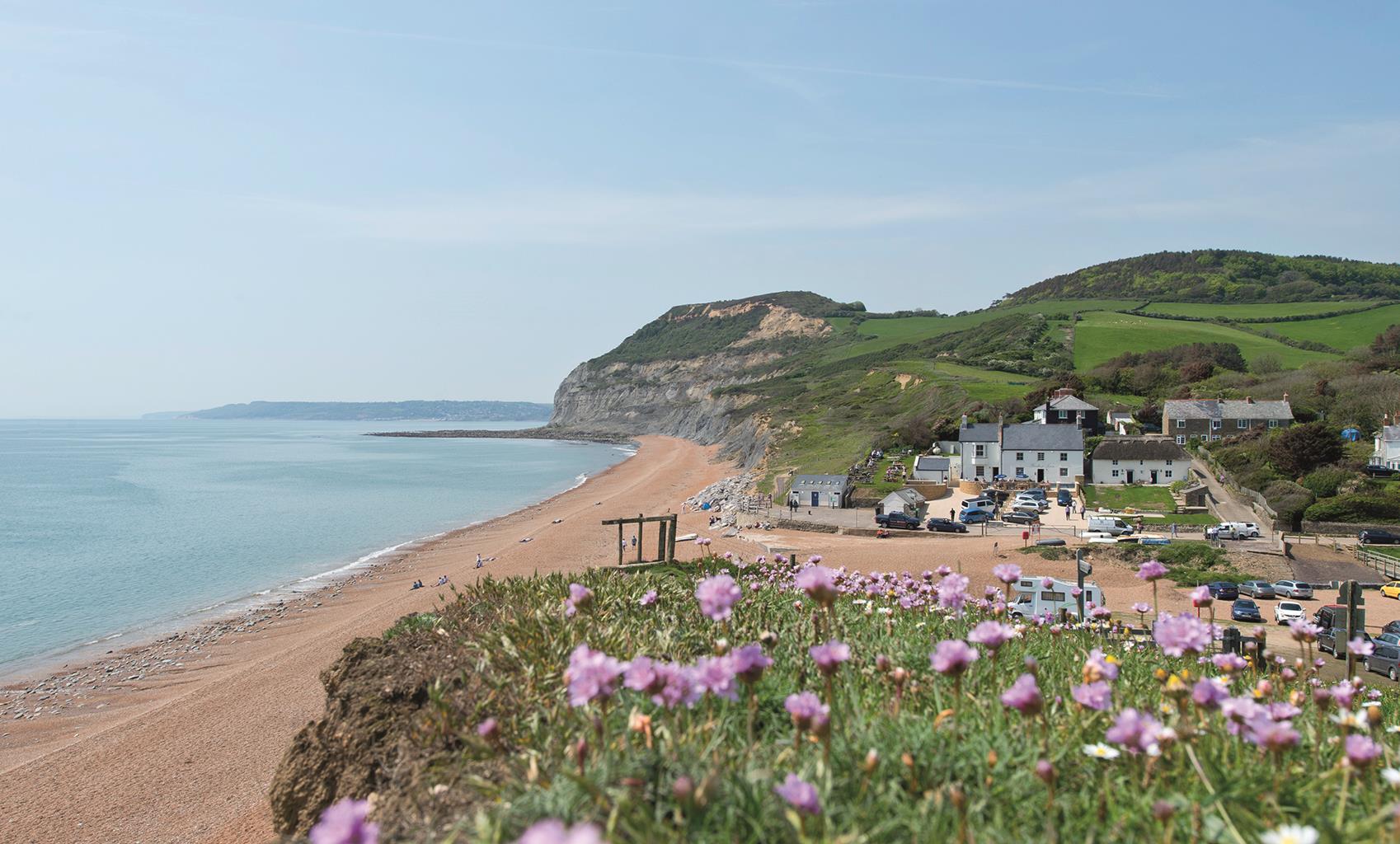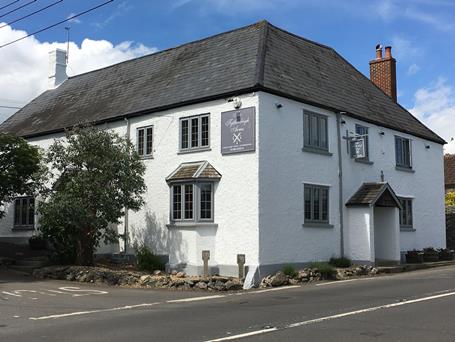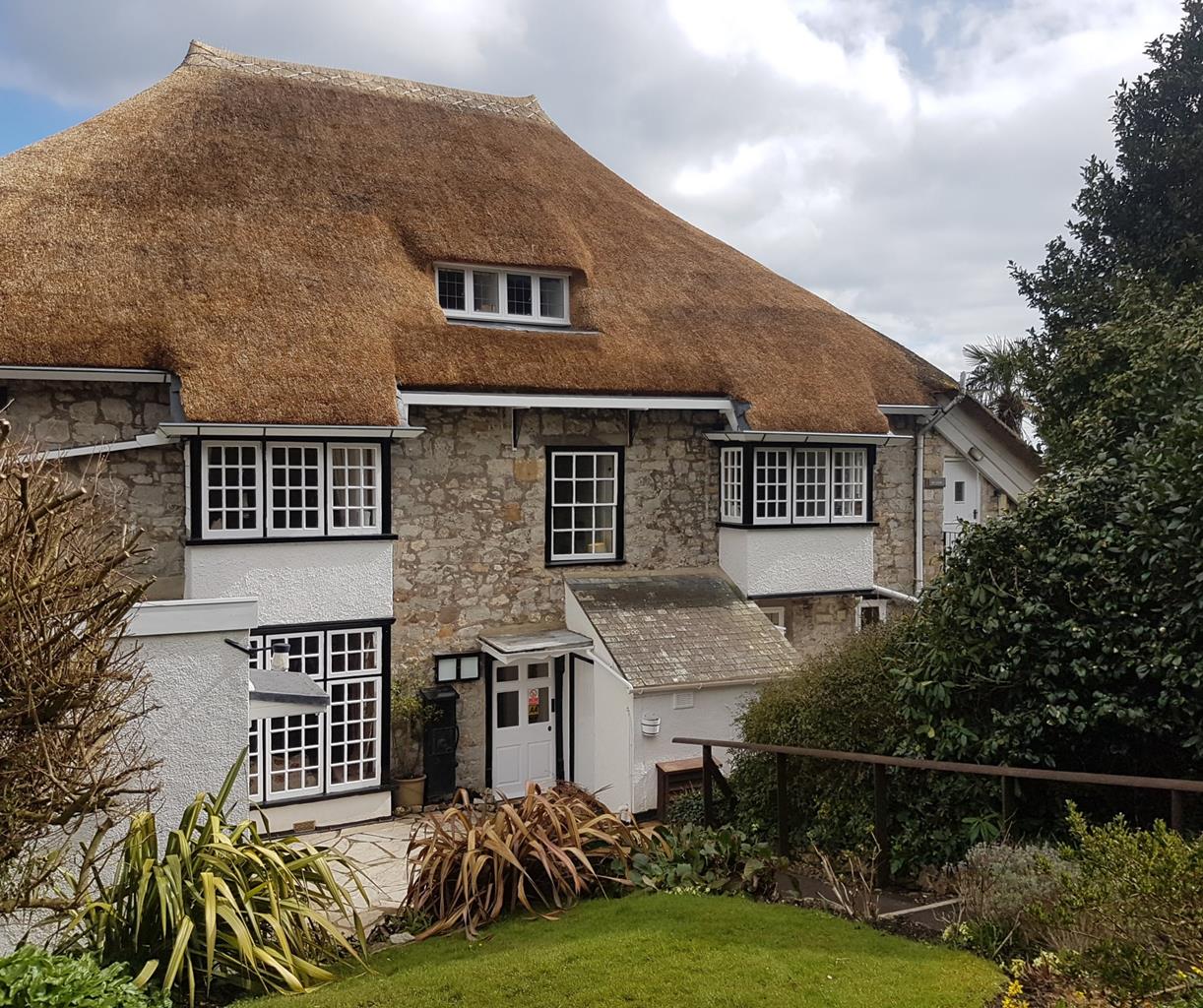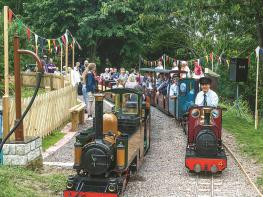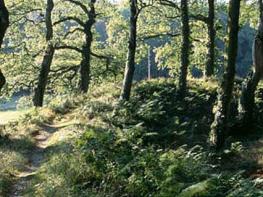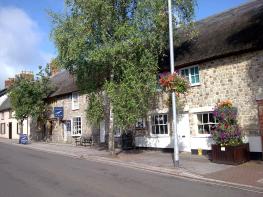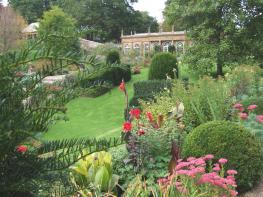Set in a beautifully renovated Grade II listed Georgian townhouse, Lyme 1 is a fine mix of…
The historic port of Lyme Regis

4 miles (6.4kms)
About the walk
The Cobb breakwater was first constructed in the 13th century. This sheltered harbour made Lyme Regis Dorset’s second largest port. The Cobb was then rebuilt in Portland stone in the early 19th century, with a walkway incorporated on the sheltered side. While the shipping trade had waned by that time, cargoes were still unloaded here into the 20th century. Jane Austen visited Lyme Regis in 1804, and set a pivotal scene of her novel Persuasion (1818) on the Cobb – the impetuous Louisa Musgrove mistiming her jump from the steps.
Lyme’s main claim to fame is its fossils. The cliffs around the town are rich in Jurassic era sea shells, and important also for discoveries of fossilised fish. Here, in 1811, fisherman’s daughter Mary Anning discovered the first complete ichthyosaur – a marine reptile a bit like a dolphin, which could grow up to 33ft (10m) long. This specimen is now the pride of London’s Natural History Museum. Few casual amateurs are going to have the pleasure of finding a plesiosaur (also first found here by Mary Anning). The easiest and safest fossils to spot are shells and the Portland Screw (a long, curly gastropod) in the stone flagstones of the Cobb itself. Fragments of ammonites, some as big as dinner plates, can also be spotted in seawashed boulders along Devonshire Beach to west of the Cobb. Both ammonites and the pointed, bullet-like belemnites can be found in the crumbly black rocks of Black Venn, between Lyme and Charmouth. Note that both these beaches are covered at high tide, and the cliffs above are subject to sudden landslips.
Local philanthropist Thomas Hollis created the seafront walkway in 1771 as an alternative to the lower cart road. As you walk along, note the ammonite lamp standards. At the eastern end, the fortifications, Guncliffe Walk, are really a disguise for a modern sewage scheme. Along the seafront, shingle on your left gives way to sand near the amusement arcades. Don’t search this beach for fossils: both shingle and sand have been imported, to give the town a beach that’s still there even at high tide.
Walk directions
From the harbour car park, face inland and take the path that runs to the left of the bowling green, up steps between wooden chalets. Cross a road and continue via more steps up through steep woodland beside a stream. Fork at a kissing gate at the top, then turn right through another kissing gate. Follow first a path and then a road between villas, to lead you across a car park.
Cross the road ahead of you and then, with Coram Tower on your left-hand side, continue straight on along Pound Road. Pass the thatched Kersbrook Hotel, then cross the B3165 at Mariners Hotel, to go down Woodmead Road. Immediately turn left through a gate, along the path that carries on down through Slopes Farm woodland. A gate leads out onto Roman Road.
Turn right across the River Lim, and turn left up a lane signed ‘Wessex Ridgeway’. At a fork, keep ahead on a path to the right of the stream, which it crosses on a footbridge after 220yds (200m). Go through a gate and cross the field ahead. At the corner bear right through a gate, cross a footbridge and bear right over a second one.
Near a thatched cottage on the left turn right, signed ‘Dragon’s Hill’, and follow the track up through woods to a gate. Continue past sewage works and through another gate into a field. Go straight on up the hill, with Sleech Wood to your left, into a second field. Near its top, just below Dragon’s Hill, go through a gate to a lane corner and turn right, along a hedged track (signposted ‘A3052’). It passes along the foot of a caravan park to emerge on the A3052 (Charmouth Road).
Turn right and follow this for 0.5 miles (800m), down into the town. Turn right into Monmouth Street, opposite the church, through George’s Square with its gardens on your left. Turn right into Coombe Street, up the hill passing Dinosaurland Fossil Museum to the bridge.
Take the riverside path down left, signposted ‘Town Mill’, between mill stream and river. With your back to the Town Mill, go ahead up Mill Lane to Coombe Street. This time turn right down Coombe Street, towards the harbour. At the end turn left on Bridge Street, past the Lyme Fossil Shop and Lyme Regis Museum, turn immediately right, just before the Guildhall and descend a flight of stone steps to the shore.
Turn right past a huge anchor and continue past an ornate town clock on a small tower to Marine Parade. Continue along the front, eventually passing the Royal Standard pub on your left. Bear left by The Cobb Arms and walk down to the end of the Cobb. Returning, turn left by the Lifeboat Station into the car park.
Additional information
Town centre, promenade, woodland steps, paths
Town, cliffs and hinterland of steep valley
Very busy in summer, dogs banned from Town Beach March to October; other times on leads
OS Explorer 116 Lyme Regis & Bridport
Monmouth Street pay-and-display near harbour (others on route)
Signposted at several car parks and seafront
WALKING IN SAFETY
Read our tips to look after yourself and the environment when following this walk.
Find out more
Also in the area
About the area
Discover Dorset
Dorset means rugged varied coastlines and high chalk downlands. Squeezed in among the cliffs and set amid some of Britain’s most beautiful scenery is a chain of picturesque villages and seaside towns. Along the coast you’ll find the Lulworth Ranges, which run from Kimmeridge Bay in the east to Lulworth Cove in the west. Together with a stretch of East Devon, this is Britain’s Jurassic Coast, a UNESCO World Heritage Site and Area of Outstanding Natural Beauty, noted for its layers of shale and numerous fossils embedded in the rock. Among the best-known natural landmarks on this stretch of the Dorset coast is Durdle Door, a rocky arch that has been shaped and sculpted to perfection by the elements. The whole area has the unmistakable stamp of prehistory.
Away from Dorset’s magical coastline lies a landscape with a very different character and atmosphere, but one that is no less appealing. Here, winding, hedge-lined country lanes lead beneath lush, green hilltops to snug, sleepy villages hidden from view and the wider world. The people of Dorset are justifiably proud of the achievements of Thomas Hardy, its most famous son, and much of the county is immortalised in his writing.
Nearby stays
Restaurants and Pubs
Nearby experiences
Recommended things to do
Why choose Rated Trips?
Your trusted guide to rated places across the UK
The best coverage
Discover more than 15,000 professionally rated places to stay, eat and visit from across the UK and Ireland.
Quality assured
Choose a place to stay safe in the knowledge that it has been expertly assessed by trained assessors.
Plan your next trip
Search by location or the type of place you're visiting to find your next ideal holiday experience.
Travel inspiration
Read our articles, city guides and recommended things to do for inspiration. We're here to help you explore the UK.


